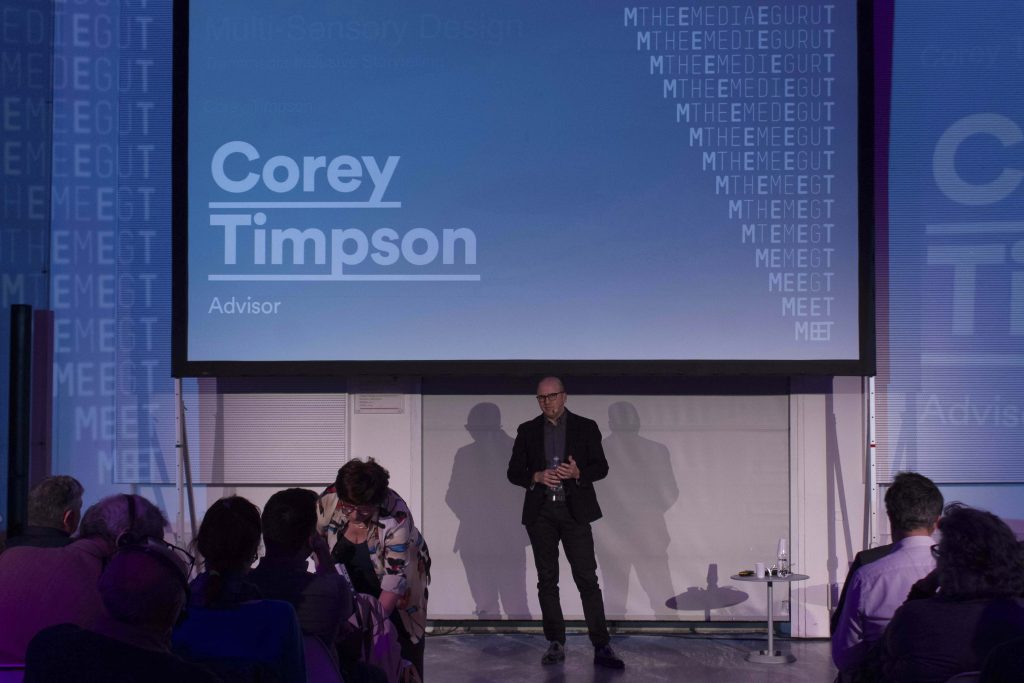Post
Timpson’s 5 principles of cultural innovation

With technological progress, people’s habits and expectations have changed too. By studying visitors’ interactions in museums, Corey Timpson, a Canadian expert in cultural innovation, has found that nowadays digital culture, usability and accessibility are prerequisites for design. This was addressed in his speech oninclusive design, which brought over 300 people to Triennale on May 16th. Watch the lecture.
Years of experience have led Timpson to come up with the five principles that are the foundation of storytelling in museums. Here’s a summary.
Experiential
Traditionally, museums are meant to be places where findings are collected and displayed, places of culture and learning. According to Timpson,it is essential for a museum to provide an experience that drives visitors to start researching all that they have seen. Only through a relevant experience can an exclusive dialogue be established with visitors, by adjusting the visit to everyone’s needs, to increase involvement and learning.
Inclusive
The new users of cultural contents expect to see a new form of inclusion. In the attempt to make the contents of an exhibition accessible to a wider and wider public, design must reflect all the targets and potential limits. According to Corey Timpson, when they work, designers should muster a great deal of creativity and come up with user-friendly products. This is what inclusive design is all about: a form of design that reflects all the human differences since the start, where the impossible becomes possible through technology. This is the inclusive designer, a new profession that makes culture really accessible.
Multisensory
Active or passive, physical or digital, feelings or sounds, there is a multitude of multisensory experiences out there.Looking, listening, feeling: according to Corey Timpson, it is essential for viewers to be involved in multiple experiences that excite all their senses. In Timpson’s opinion, the advantage of the multisensory is that it can overcome differences by finding one single communication system that lets anyone tell and experience stories through the senses, beyond any border and beyond any language, physical or gender barriers.
The photos for the exhibition Sight Unseenwere taken by blind people: “My goal was not all about pushing the boundaries of inclusion, it was making passive 2D graphics active and interactive”, Corey Timpson explained during the lecture. “Using 3DPhotoworks, we recreated tactile and audio images to make these images accessible to those who could not see them with their eyes. This is what multisensory is all about: seeing images with one’s ears and with one’s hands”.
Interactive
While there are active experiences (doing something) and passive experiences (making someone do something), Timpson thinks that only a combination of both can make visitors have a real impact on the experience they are involved in: using touch screens to browse information is not enough, a multidirectional dialogue must be established between the visitors and the contents of an exhibition. In the exhibition Rights of Passage: Canada at 150at the Canadian Museum for Human Rightsin Winnipeg, the visitors were in a place where their presence was detected, so a wave of colour was generated all around and interacted with the waves of the other people standing there. In this way, visitors become a variable in the equation that defines the experience in the museum as a mix of active, passive and interactive that provides lasting engagement. A tool, this one, that can be used to teach people how to care for and be responsible for the other people who are with them.
Immersive
The immersive includes different ways of showcasing findings in a museum (photos, documentaries, videos) to reach targets that have different learning curves and preferences. To create an immersive experience, multisensory experiences must be established first. In the exhibition Stitching Our Struggleson freedom of expression in Latin America, for example, the visitors could get into a South American village using virtual-reality headsets where they saw a 360-degree video and found themselves right in the midst of community life.
